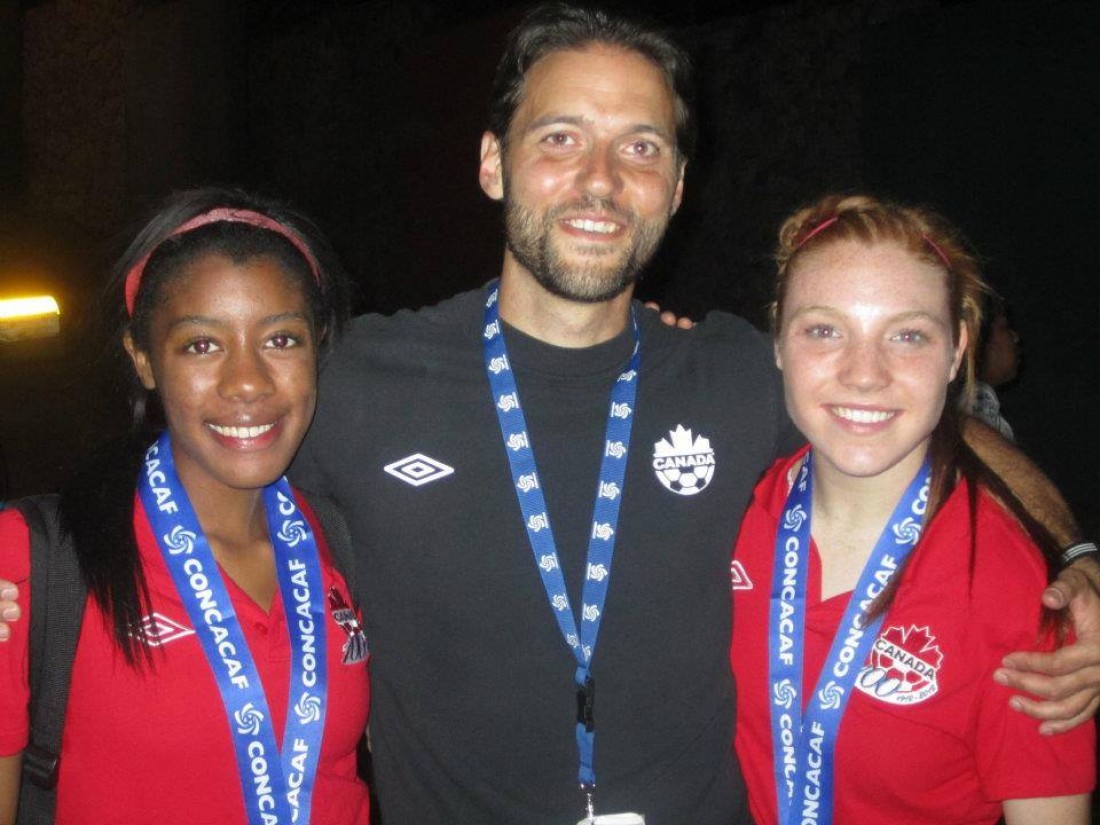Canada’s 2015 FIFA Women’s World Cup experience is over. It ended yesterday in their Quarter-Final match against England, when two costly first-half mistakes in the span of three minutes allowed the English team to build a 2-0 lead that the Canadians were not able to overcome, despite a good overall performance throughout the game. Although they failed to win the World Cup, this year’s Canadian team has been an incredible success story, both because of the results they were able to achieve on the pitch, as well as for the way they have inspired an entire nation – including hundreds of thousands of young aspiring female players.
As a fitness coach, there has been one lesson regarding the physical side of the game that I have taken away from Canada’s performance at this year’s FIFA Women’s World Cup. That lesson is that we can be more assured and confident in the ability of our young players to succeed at the senior international level in this country. In the starting 11 of this year’s Canadian Women’s National Team were two players that I had the pleasure of working with three years ago, as members of the Canadian Women’s U17 team: Ashley Lawrence and Kadeisha Buchanan. While several Canadian players had outstanding performances in this tournament, in my opinion it was the performances of Lawrence and Buchanan that stood out the most. Lawrence displayed speed, athleticism, good close control under pressure, and even came up with two game-changing plays; first, the crucial goal that helped Canada draw with the Netherlands to secure qualification into the knock-out rounds of the tournament, and second, a dribbling run and shot on target that set up Christine Sinclair’s rebound goal to get Canada back into the game after falling 2-0 behind to England in the Quarter-Final. Buchanan, already a star in the Canadian team, cemented her reputation as one of the best centre backs in the women’s game with a combination of tenacious defending, accurate and reliable passing, and incredible composure under pressure. She seemed to get better with each game in this tournament, and her performance against England even included some exhilarating runs into the opponent’s half of the pitch to start counter-attacks. At just 20 and 19 years of age, respectively, Lawrence and Buchanan represent a new breed of women’s player, both in Canada as well as in the rest of the world. While their youth (and accordingly, lack of senior international experience) may be seen by some as a hindrance, there is a lot of scientific evidence to support the use of more young (ages 20 and under) female players in senior international competitions.
Four years ago, at the 7th World Congress on Science and Football in Nagoya, Japan, Paolo Pacione (then the Fitness Coach with the Ontario Soccer Association and the Canadian Men’s U20 and Olympic Teams, and now the Fitness Coach of the Montreal Impact in Major League Soccer) and I presented a paper titled “A Longitudinal Analysis of Speed and High Intensity Running Ability in Elite Canadian Youth Female Soccer Players: A Pilot Study.” This study was conducted in conjunction with the Ontario Soccer Association and the Canadian Sport Centre Ontario, and involved a four-year longitudinal analysis of fitness test scores of elite female soccer players from the ages of U14 to U17, from the Ontario Provincial Program and National Training Centre of Ontario (or “NTC”, a pool of players that represents Ontario’s feeder-system to the Canadian National Women’s U17 Team). Speed and Yo-Yo (endurance) test scores from players who (eventually) were selected into the NTC Program, were compared with those from players who (eventually) were not selected. What we found was that, at the U14 age category, the “eventual” NTC players had better speed and endurance scores that the “eventual” non-NTC players. This was not so surprising. What was more surprising, however, was that four years later (when the selections were made for the NTC program), the “non-NTC” players, even though they did improve, never reached the speed or endurance level that the NTC players had reached at the U14 age category.
While this may sound confusing, what these results indicate is that it may be possible that crucial physical abilities in soccer like speed and endurance may be peaking in female players in as early as the U14 age category. Accordingly, players who exhibit speed and endurance abilities which meet or exceed the NTC or National Team standards beyond the age of 14 should presumably be able to meet the physical demands of youth (U17, U20) or even senior international level competition. In other words, Ashley Lawrence and Kadeisha Buchanan are not the only young female players who have the physical tools to compete at the Women’s World Cup for Canada. Indeed, this year’s Canadian team even included 1997-born, 17-year-old Jessie Flemming in its roster.
Of course, just because a player achieves a certain standard level of performance in speed and endurance testing does not mean they will be technically, tactically, and psychosocially ready to compete at the international level – these are all factors that need to be considered and evaluated by the coaching staff prior to any selection decisions being made. The importance and value of scientific data like that presented in our study four years ago is that it can provide coaches with the rationale to consider – and possibly to eventually select and include – certain younger players based on their physical ability. In Canada, we have many other young female players who can meet the physical demands of senior international competition. They may get their chance in the years to come.
I’d love to hear your thoughts about this topic. Drop me a line here to get the conversation started.


Leave A Comment